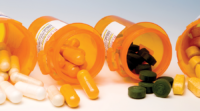The rising cost of drugs is an issue that has been troubling health care professionals, patients and payers.
In 2010, Medicare spending on drugs accounted for 10 percent of the total budget, according to the Centers for Medicare & Medicaid Services (CMS). By 2014, that percent had ballooned to 14 percent. Medicare alone spent $143 billion on drugs that year. According to data from the Centers for Medicare & Medicaid Services (CMS), the cost of prescription drugs grew by 12.2 percent in 2014, which outpaced overall health care spending growth by 6.9 percent.
In a recent survey from InCrowd, a health care market research company, 45 percent of health care professionals reported that they wanted lower drug prices for patients, but only 3 percent said they expected to actually see lower prices and better price control in 2016. Patients have similar sentiments about drug prices. According to a Kaiser Family Foundation (KFF) survey from Aug. 20, 2015, 72 percent of respondents said the cost of prescription drugs is unreasonable, and 74 percent said drug companies are too concerned with profits.
In an effort to help stakeholders and the public better understand drug pricing, and the factors driving it upward, federal health officials created a database of federal spending on 80 medications that accounted for about a third of total drug expenditures in 2014.
Here’s a look at three insights into the explosive growth in drug spending based on the data in the recently released federal database.
1. Hepatitis C and big ticket drugs drive up costs
Sovaldi™, a high-priced hepatitis C drug, and other big-ticket drugs played a significant role in driving up overall drug expenditures.
In fact, Sovaldi, which costs a whopping $84,000 for a 12-week course of treatment, was the largest single contributor to Medicare expenses, costing $3.1 billion in 2014. Spending on drugs to treat this disease alone cost Medicare nearly $4.6 billion in the first half of 2015.
Orphan drugs, and specialty drugs that treat rare diseases or cancer, often come with huge price tags. Even marginal increases in use can result in spending spikes that affect the overall health care spending for public payers and patients.
2. Popular prescriptions commonly see price spikes
Price spikes in commonly used drugs have drawn scrutiny as well, and have contributed to rapidly increased total drug spending in recent years.
One popular drug, Nexium®, an acid reflux medication, had a price increase of about 40 percent per unit over the course of five years. The result was about $800 million in additional spending for Medicare, despite the fact that the number of people using Nexium actually decreased during the same time period.
Other popular drugs, such as Advair Diskus® and Crestor®, have had similar price spikes, which have greatly contributed to the rise in overall drug spending.
3. Payer spending and patient spending don’t necessarily relate
The drugs that drive up costs for payers, such as Medicare, and the drugs that send patients home with huge copays and staggering bills are likely not the same drugs.
For example, Abilify® cost Medicare more than $2.5 billion in 2014. This amount represents about $6,000 per year per beneficiary, but the average portion patients paid out of pocket amounted to a paltry $552 per year. Additionally, the vast majority of patients on this medication were covered under a low-income subsidy, and paid less than $20 per year.
So, while patients and health care payers seemingly have the same goal, to lower the cost of medication, they ultimately would benefit from different drugs undergoing price cuts.
You can advocate for lower prescription drug costs for your patients by contacting your legislators and educating them about important issues affecting your pharmacy and your patients.











